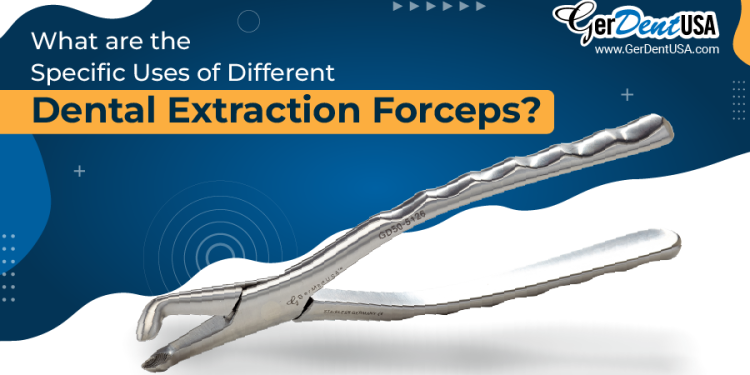Extraction forceps are a must-have dentistry tool. Commonly, they are used by dentists and oral surgeons to extract luxated teeth safely.
The dental extraction forceps come in various shapes and sizes, each designed for specific teeth and dental procedures. In this blog, we will discuss the use of different tooth extraction forceps and compare American and English patterns.Moreover, we will learn about the maxillary and mandible forceps and discuss the concept of universal forceps.
Keep reading!
Table of Contents
Understanding Dental Extraction Forceps
Extraction forceps are dental instruments designed to grasp and manipulate teeth during tooth extraction.
Typically, they are made of high-quality stainless steel to ensure durability and ease of sterilization; it’s crucial for maintaining aseptic conditions in the dental clinic.
The design and specifications of these forceps are tailored to the anatomy of the teeth and their placement in the mouth.
American Pattern vs. English Pattern Forceps
Two main patterns of tooth extraction forceps are commonly used: the American pattern and the English pattern.
American Pattern Forceps
These forceps have horizontal hinges and long, non-slippery handles, providing a firm grip on the tooth.
American pattern forceps are typically used to extract maxillary (upper) incisors and canines, but they are also helpful in extracting other teeth, such as molars and premolars.
These forceps come in various shapes and sizes to accommodate different types of teeth.
The numbering system for American pattern forceps corresponds to the specific tooth they are intended for, simplifying the selection process for dentists.
Some examples of American pattern forceps include:
- #150 for upper premolar
- #23 for lower molars
English Pattern Forceps
These forceps are characterized by their visible pins or screws in the hinge area.
English Pattern Forceps are also available in different sizes and shapes to meet specific needs as per tooth type.
Two examples of English Pattern Forceps with numbers are as follows:
- English Pattern Forceps #168: For upper canines
- English Pattern Forceps #74: For lower incisors
Many other English Pattern Forceps are available, each designed for a specific type of tooth extraction.
These dental extraction forceps are a popular choice for dentists because they are relatively easy to use, making them a good option for both experienced and novice professionals.
Both American and English pattern forceps have their advantages and drawbacks.
The choice between them depends on the dentist’s preference and the specific requirements of the dental extraction.
Maxillary and Mandible Forceps
The maxillary (upper jaw) and mandible (lower jaw) have different anatomical features, so each requires specialized forceps.
Moreover, within these two regions, teeth also vary in size, shape, and location.
Dental professionals use forceps with specific numbers assigned to individual teeth to address these variations.
Examples:
In the American pattern, maxillary forceps have numbers like:
- #150 for upper molars
- #88 for upper premolars
- #1 for upper central incisors
Mandibular forceps include:
- #23 for lower molars
- #151 for lower premolars
- #217 for lower central incisors
This numbering system simplifies identifying and selecting the appropriate forceps for the targeted tooth, reducing the risk of any complications.
What Are Universal Forceps?
While specific forceps designed for individual teeth and patterns are available, dental professionals also use universal forceps.
As the name suggests, they are versatile forceps useful for various dental extractions.
They typically feature a beak that can adapt to different tooth shapes and sizes.
They are handy in cases:
- Where a dentist may need to extract multiple teeth of different types in a single procedure
- When specific forceps are not readily available
Although universal forceps are considered the best dental extraction forceps, they come with certain limitations.
They may not provide the same level of precision and control as tooth-specific forceps.
To Summarize!
Understanding the use of different dental extraction forceps is essential for providing quality dental care and maintaining oral health.
The choice between American and English patterns depends on the dentist’s preference and familiarity. Universal forceps offer versatility but may require more skill and care during use.
Dentists should carefully select the appropriate forceps to ensure the safe and efficient removal of teeth while minimizing patient discomfort and complications.
If you need the best dental extraction forceps with multiple variations, you must visit GerDentUSA. They are the manufacturer and supplier of high-precision dental surgical instruments with customization options.


 Home
Home










